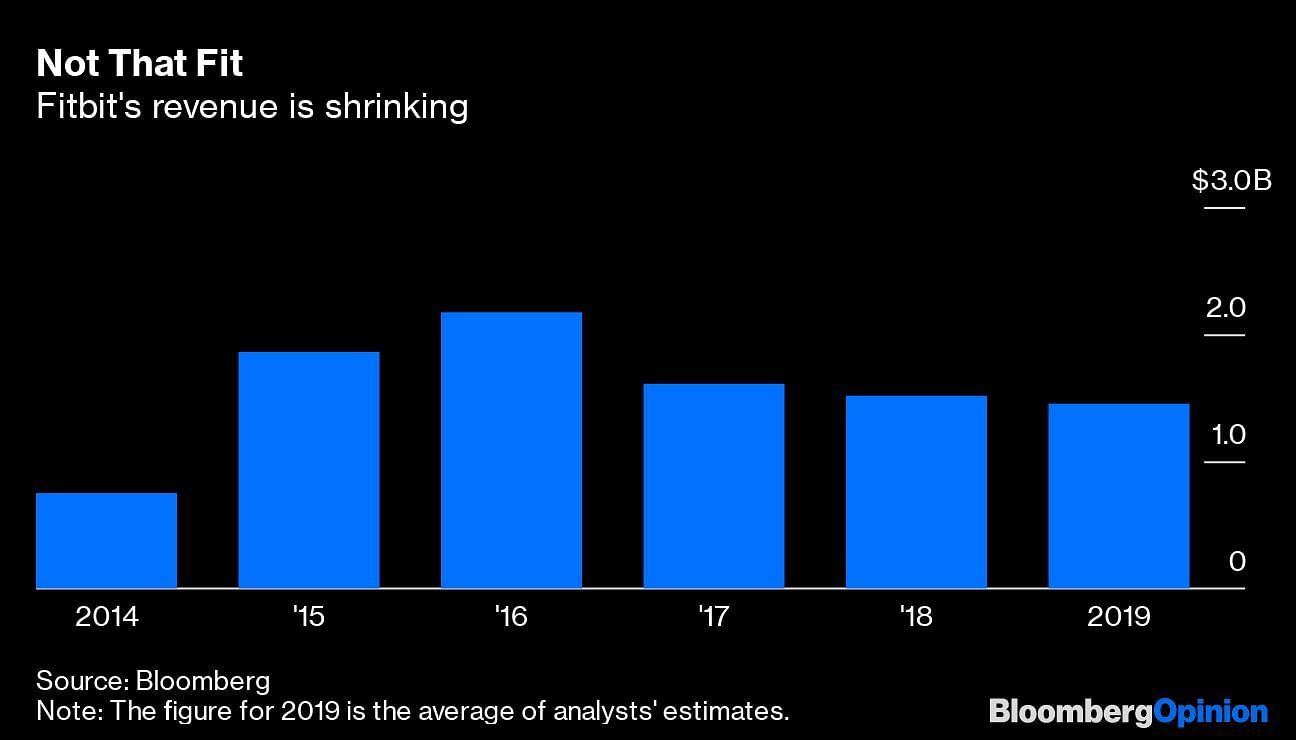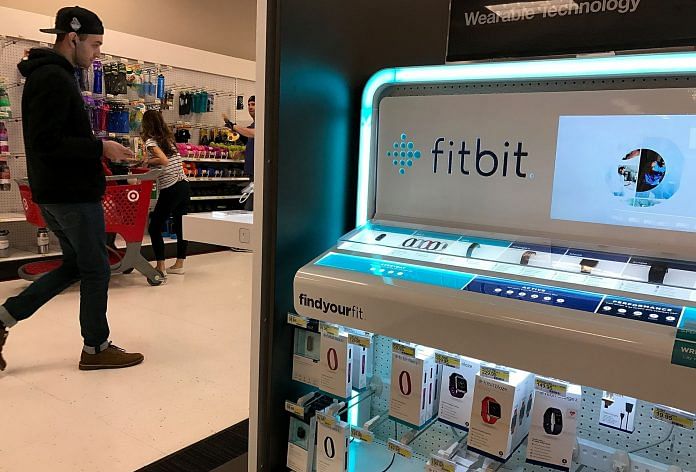I hope Alphabet Inc. has a plan.
The Google parent company announced on Friday that it would spend $2.1 billion to buy Fitbit Inc., a pioneer in the fitness-tracking gadgets that haven’t proved to be a lasting category of consumer electronics. Google has now spent billions of dollars developing homegrown hardware such as its Pixel smartphones and buying all or parts of companies that specialize in hardware.
This growing collection of computer hardware betrays Google’s apparent belief that it’s not well-positioned to navigate the coming world of technology. It’s a surprising show of defensiveness from a company that has charted the course of computing for the last 25 years.
Most of the world’s big technology companies, including Google, Amazon.com Inc., Facebook Inc. and Tencent Holdings Inc., are betting that people’s interactions with computers will become more diverse. This makes sense. For decades, people’s primary interactions with computers have been through glowing rectangles — mostly personal computers or smartphones.
Technologists now believe that essentially everything will become a computer. The lines will blur between real life and the digital one. When we interact with cars, televisions, home appliances and other people, there will increasingly be a layer of technology between those interactions, even if the technology is not as obvious as a glass screen.
Google, in theory, should be able to take advantage of this shift. The company is great at software and making sense of computerized information, and those are the skills that will make companies winners if and when technology pulls away from the glowing rectangles.
The path to that world, at least for now, seems to require more but different types of glowing rectangles. Amazon has introduced a zillion types of gadgets — everything from speakers and headphones to a microwave oven — to inch toward the future of barrier-free computing.
Google has followed this model, too, and it seems to believe it can’t get there alone. Before the Fitbit deal, Alphabet had already bought connected-home startups Nest and Dropcom, spent $1.1 billion to acquire engineering and design teams from smartphone maker HTC and this year purchased smartwatch intellectual property from Fossil. What does a watchmaker know about technology that Google doesn’t? Google didn’t really say. Maybe the fruits of that deal will surface in future Google products.

Google keeps refining how it talks about its hardware efforts. At an event last month to introduce updated consumer electronics, executives trotted out the phrase “ambient computing” an umpteen number of times. This is a techie shorthand for the future of computing beyond the glowing rectangle, with computing woven into every fiber of our lives.
It’s not entirely clear how Fitbit fuels Google’s mission. Fitbit’s device sales — mostly watches or other wrist-worn devices that count steps, measure heart rate or do some tasks of smartphones — have stalled. Everyone talks about technology giving people more control of their health and spotting problems like high blood pressure or diabetes early enough to make a difference in people’s lives. Apple’s pitch for the Apple Watch is basically, “If you don’t have one, you will die.” (I’m exaggerating, but not by much.)
For now, this is a pipe dream. The current crop of health or fitness-focused gadgets aren’t quite a revolution. Devices like Fitbits and the Apple Watch are nice-to-have novelties or relatively niche tools for healthy or fitness-obsessed people.
People like me have focused on Google’s relatively small market share in growing consumer electronics devices beyond smartphones — devices like voice-activated speakers and wireless headphones that double as computer navigation. That’s not Google’s real problem, though. These market share figures are proxies for a company’s status in charting the path to the world of computers beyond the glowing rectangles.
Google typically tries a host of technology and business strategies to the point of incoherence. This is just what Google does. And it can afford to test and try and buy lots of things as it plots a future where devices of any type are not necessarily people’s primary gateways to the digital realm. The uncharacteristic oddity is that everything Google is trying in hardware shows how far it is from figuring out the future of computing. – Bloomberg
Also read: Paytm, PhonePe, Amazon, Google help push UPI payments past 1 billion transactions



